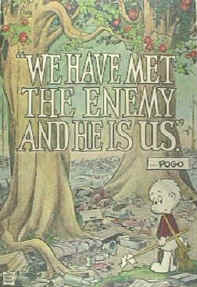The first fully rational brain will be an artificial one. Ray Kurzwiel thinks it will begin operation in 2050 or so. Of far greater importance, however, is the race to create the first fully rational human brain, which will take longer. The current status of human brain evolution is the predictably irrational brain.
Rationality, or the capacity for consistent logical reasoning or critical thinking, is only a newly emerging function of the brain. The rational thinking engine is still incomplete. It only runs in short bursts, between which it operates in very predictably irrational ways. Its operation is hindered by millions of glitches and bugs created by innumerable accidents of automatic, unconscious learning (also known as cognitive biases, logical fallacies, implicit associations, bad algorithms, spaghetti code, corrupt memory, null pointers, bad wiring, programming bugs, etc.
Now that humanity has the power to destroy the world without even meaning to, we can no longer afford the leisurely pace of biological evolution for completing and perfecting our rational thinking machinery. We must somehow seize the day and re-engineer the brain with our own hands–no matter how gooey the going may get.
12:45 AM 1/21/2010
Imaginary Psychology Doctoral Thesis: “The Big Picture, or Epistemology, Cognitive Dissonance, and the Hunchback of Notre Dame”
In Victor Hugo’s story, The Hunchback of Notre Dame, each character was embedded in (or inhabited) his or her own particular point of view (POV) or psycho-social frame of reference. (see also: reality, world view, gestalt, paradigm, culture, “The Matrix“, etc.). For each different character, some portion of the POV was an accurate match with actual facts and circumstances (i.e. reality) and some portion was inaccurate, containing errors, distortions, delusions, false beliefs, imaginary fantasies, wishful thinking, glittering generalities, etc.
(ASIDE: Wherever the true parts of the POV and the false parts of the POV come into contact, the stress of cognitive dissonance (i.e. clashes, contradictions, dilemmas, paradoxes, non sequiturs, etc) might develop like heat produced by friction. To reduce the discomfort of cognitive dissonance a waxy, rubbery, sticky, slippery substance (akin to “psychological mucus”) will form between all incongruent, conflicting, contradictory, disconsonant, discordant, discrepant, disparate, dissonant, and divergent joints, gaps, and fractures. Over time, this mucus-like mental substance might accumulate to such a degree as to make up a substantial portion of the overall weight or volume of the POV.)
Returning to Hugo, each of his characters had its own set of insights and delusions and each had times when its POV helped it to adapt or solve problems and times when the POV failed to do so. Each character attempted in its own way to incorporate knowledge of the world from trusted sources such as religion, academic or political authority, kinship, popular culture or traditions, subcultures, etc.
Hugo gradually leads the reader through each character’s reality, giving us vantage points from which to glimpse the insights and errors of each and the opportunity to gather up a “big picture” of our own.
In Hugo’s story, the cathedral was perhaps symbolic of this big picture, and perhaps it was also a proxy inside the story for the author himself.
( BTW in the self-development theory of G.I. Gurdjieff, each human being is like that–a composite of semi-autonomous personalities or identities ranging from hunchbacks to princes.)
And perhaps Hugo’s cathedral is (like the proverbial elephant which a group of unsuspecting blind men are asked to feel and then describe) also a proxy for the real world, (or at least its mental representation within the rational brain). Perhaps Hugo’s characters, like the legendary blind men, are “seeing” only the parts of that world that fall within the limited physical and mental “reach” of each. Of course the natural inclination is for each person to defend “the evidence of his own senses”, so to speak, and to dispute anything contrary.
The difficulty of repeatedly transcending one’s personal world-view to piece together the best “big picture” of reality is one of the greatest ongoing cognitive, emotional, and social challenges of every human being.
Poor Richard
——————-
There is no answer. There is no solution. There is only practice. (Anon.)



 Church of Reality
Church of Reality Critiques Of Libertarianism
Critiques Of Libertarianism P2P Foundation
P2P Foundation Stanford Encyclopedia of Philosophy
Stanford Encyclopedia of Philosophy The Stone
The Stone
May 22, 2012 at 6:37 am
[…] The Inner Hunchback (PRA 2010) […]
January 11, 2019 at 11:58 pm
Cognitive dissonance as precursor and nutrient substrate ? Annotation, if this were chess, might be, ?! Or, !?
Mm, ’tis symmetrical at least.